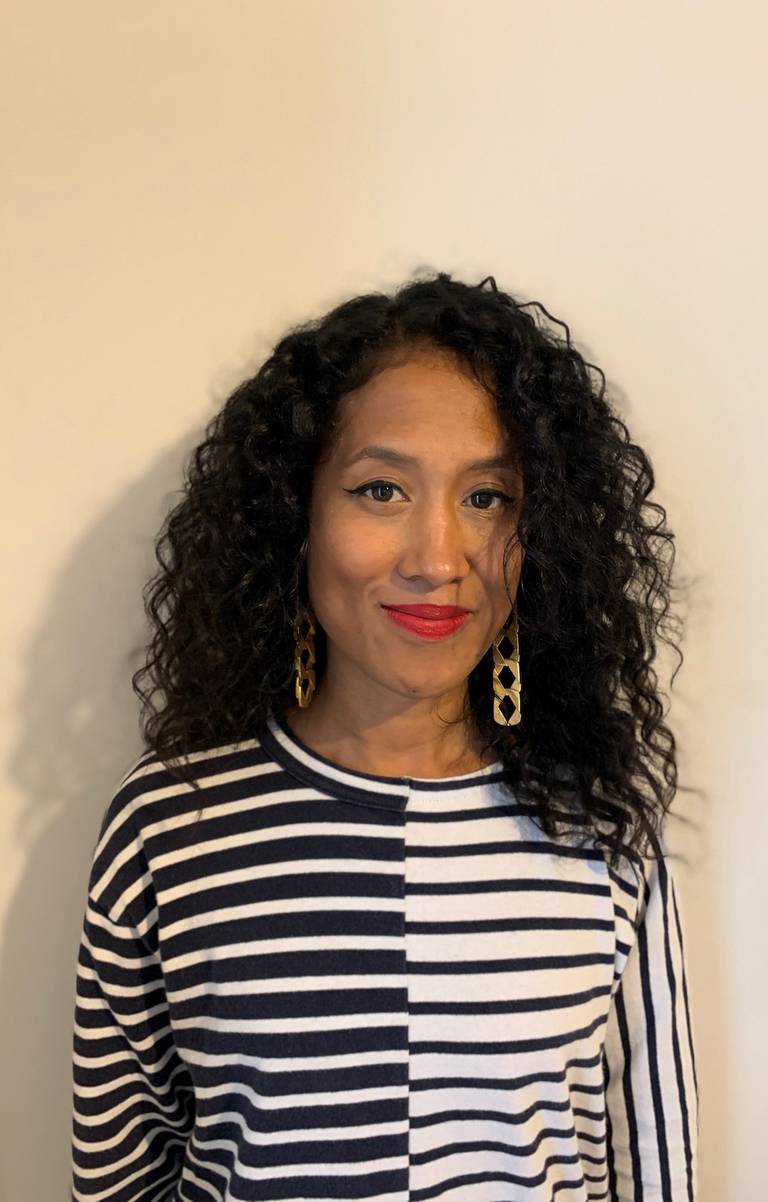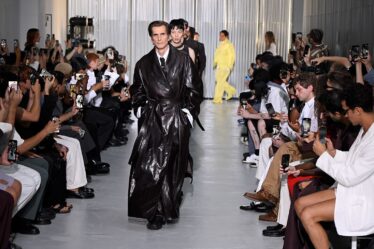
Discover global job opportunities in buying on BoF Careers today.
Growing up in a rural town in the UK, “where access to high fashion was completely non-existent,” Linda Ayepe sought local opportunities to explore her fascination for the fashion industry, landing her first role in a surf shop. This retail job, despite its remoteness, was formative as her “first insight into how buying works.”
Ayepe went on to study fashion design and marketing in London, having tailored her studies to a career in fashion. “I did art and design, textiles, Italian, French — I wanted to work backstage at fashion shows, speaking Italian with Gianni Versace.”
Through a retail recruitment agency, Ayepe landed a buying role as an admin assistant at a high street supplier for the likes of Topshop and New Look. She later went on to hold roles over the next 15 years at Net-a-Porter, Threads Styling and now currently at Harvey Nichols. Now, Ayepe shares her career advice.
For the full interview, watch on-demand the LinkedIn Live: Building a Career in Fashion with Linda Ayepe.
How did your career in fashion begin?
I always knew from a very early age that I wanted a career in fashion. The only way to get into a creative industry 25 years ago was by doing an art foundation, where you learnt lots of different artistic disciplines. So, you would do a bit of sculpture, a bit of painting, but then you would have a fashion design module at the end. It really cemented my belief that I wanted to go into that industry.
What was your first job in fashion?
I graduated and it was very important for me to see the world before I began my career. So I took two years out. I went home to Cornwall and worked as a mortgage processor to save money. I went travelling and then, when I came back to London, I didn’t have anywhere to live. I didn’t have a job. I’m not from a privileged background either so I had to sleep on my sister’s sofa — luckily, she did live in London.
I was on Jobseeker’s Allowance for a while. I joined a temping agency and a retail recruitment agency and I think it was maybe the third or fourth role I was put up for that I was successful at, and started as an admin assistant at a high street supplier that supplied Topshop, New Look, those kinds of brands.
My role was within the jewellery department, which is not really what I wanted to do — I didn’t want to work in high street buying [and] my degree was tailored more towards [the luxury] buying industry — but I knew that it was a way for me to get my foot on the ladder.
What key lessons did you learn from your first job?
As a buyer’s admin assistant, all you do is data entry and really administrative stuff. So you have to have a keen eye for precision and accuracy, and that can really set you apart. For entry-level roles, you have to be really organised and on top of your time management. You have to be able to multitask — you have pressing deadlines where projects must be completed in a certain amount of time. It is a large and extensive workload.
As a buyer’s admin assistant, all you do is data entry and really administrative stuff. So you have to have a keen eye for precision and accuracy, and that can really set you apart.
I hate to say it, but the way you present yourself does help you stand out in a role in buying, because if you can dress yourself well, what’s to say you can’t dress other people well?
What hard and soft skills are critical in building a career in buying?
You have to be very knowledgeable about fashion trends and you have to keep yourself at the forefront of what’s new. Fashion and luxury retail is global, so having that cultural awareness and understanding the different markets and different consumer preferences is key to your development.
You need to have really good business knowledge. Some people don’t realise that as a buyer, it’s not just all about shopping — everything is based on data and analysis and sales history, so you need to really understand the business behind luxury fashion. You are dealing with huge budgets, you are planning finances — you need to know about margins, pricing strategies, profitability.
You have to be really resilient as well. It’s a fast-paced industry — it’s hard work, so you have to be able to roll with that and keep calm and carry on when there are challenges. One of the biggest lessons that I have learnt is that integrity gets you everywhere. Being honest and being truthful builds trust for you as a person, for you as a representative of a brand and will help you in the future to build those really strong relationships, which is what buying is all about.
How did you move up the career ladder and land promotions in buying?
One of my friends [from my fashion studies] knew someone who knew someone who was the buying director at Net-a-Porter, so as well as formally applying for the job, I sent her an email separately with my CV. Then, I got an interview the next week.
Integrity gets you everywhere. Being honest and being truthful builds trust for you as a person, as a representative of a brand.
You have to be really adaptable and flexible within your career and within those different roles. At Net-a-Porter, I was moving across departments — I was not necessarily in departments that I felt strongly for but you have to go with where the business is telling you to go and be passionate and flexible about it.
Taking initiative and being proactive within your role goes a long way — so be that person who says, “I will do that extra project on pricing,” or “I will do that extra project on sustainability,” so people can see you have a strong work ethic and will go beyond your responsibilities, that you are embedded within that company and that you want to grow within it.
How can talent demonstrate transferable skills to move into the fashion industry?
Demonstrate your passion for the fashion industry itself — that goes such a long way for making people want to work with you. […] When I ask you what your favourite designer is, don’t say Louis Vuitton, Chanel and Dior — find those small, emerging New York or Korean designers — that’s the kind of thing that would resonate for me.
Have exposure to any form of retail, any facet of the fashion industry. You could be in sales or PR, but just having some kind of exposure to some part of the fashion industry would be a benefit.
How should buyers manage travel schedules when in the market?
Plan your schedule well in advance so that you are able to consider locations. You do not want to be crossing all over cities from one appointment to the next — your days are long anyway and there are always factors like transport, or strikes, so you have to plan your schedule meticulously. You want to make sure you are focusing on things that are really going to align with your — and your company’s — buying strategy.
Be that person that is recognised and remembered because the people that you’re having a quick drink with at the bar could be your potential employer.
The key thing when you’re travelling and while you’re out in the market is to network. Say yes to those brand dinners, go to the occasional party, have conversations with other buyers, with other sales teams — be that person that is recognised and remembered because the people you have a quick drink with at the bar could be your potential employer. Buying is a small industry and it goes round in circles. Make sure that you’re making yourself heard, that you’re asking all the questions that you need to.
What is your day-to-day as head of womenswear buying at Harvey Nichols?
I work with our fashion director to set up the buying strategy for the season, aligning with her vision, our target market and the overall business objectives of the company. I work with [the buying team] to plan and purchase the ready-to-wear for Harvey Nichols, always considering factors like the seasonality, what are the emerging trends, the current customer trends, and what customer feedback we’re seeing.
Harvey Nichols is the first role where I have had a physical store and it is so dependent on seasonality. Online, it’s hot somewhere in the world, so it doesn’t really matter if you are buying a linen dress in December. But for a store and especially in the UK, you really need to focus on what the weather is going to be like when that person is walking into the store, so that was a big change for me.
You are managing relationships — you are negotiating your terms with those brands to get the best margins and to make the most profit. You are developing budgets, ensuring that the brand portfolio is relevant for the store and always trying to optimise your profitability.
What does the future hold for fashion buying?
With social media, you can see how buying is moving towards omnichannel buying — you’re not just buying for online, you’re not just buying for the store, [but] you are thinking about buying as a bigger picture and you are thinking creatively of how to get that person from their phone into the store. What kind of events can you do? What kind of activations can you do to pull that person in? That’s a side of buying that’s being developed now — across all those different factors.
This interview has been edited and condensed for clarity.

